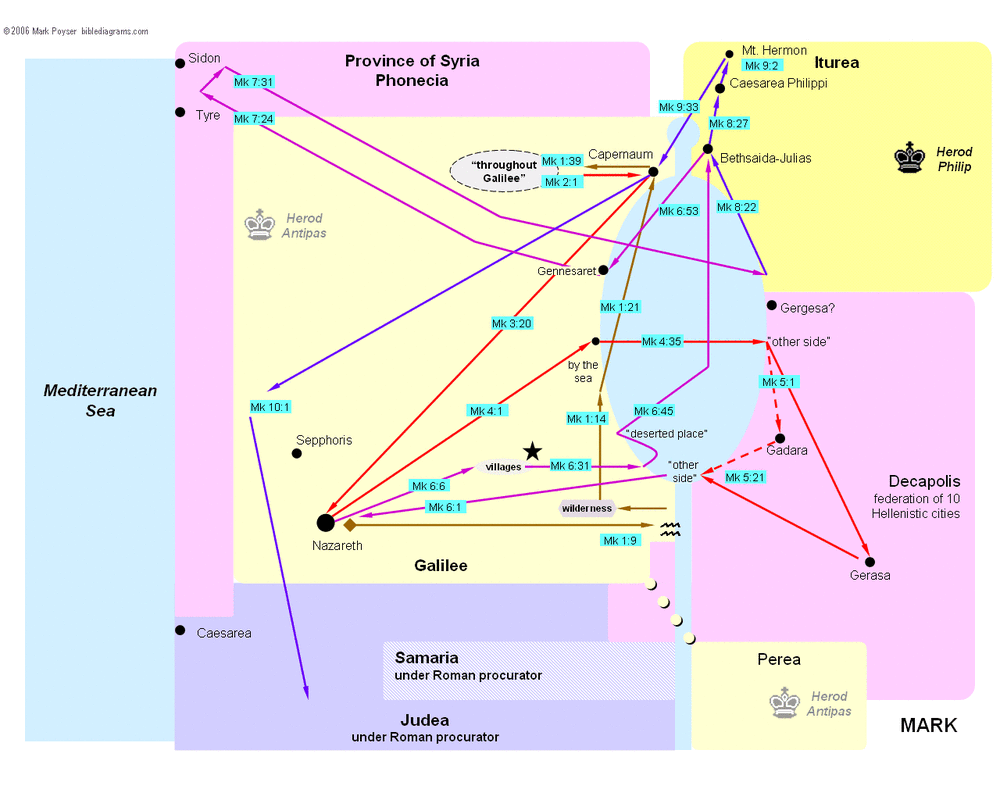In the annals of religious history, few figures have captivated the imagination of millions quite like Jesus Christ. His teachings, miracles, and profound insights into the human condition form the bedrock of Christianity. Yet, as we delve into the narrative of his life, a compelling question emerges: What areas did Jesus travel through during his earthly ministry? Mapping the Messiah’s journey presents us not only with geographical insights but also a deeper understanding of the cultural and spiritual milieu of the times. This exploration might reveal intricate connections between places and Jesus’ teachings, urging a reconsideration of how those locations contributed to the overarching message of hope and redemption.
To comprehend the full scope of Jesus’ travels, it is imperative to consider the geographical context: first-century Palestine was a mosaic of diverse regions and cultures. The land, dotted with significant cities and towns, was inhabited by a multitude of peoples such as Jews, Samaritans, and Gentiles. Each locale bore its own historical and social significance, shaping the interactions Jesus had and the messages he imparted.
Beginning in Bethlehem, where tradition holds Jesus was born, we encounter the first significant point on this map. Situated in Judea, this modest town became a symbol of humble beginnings juxtaposed against imperial power. The significance of Bethlehem extends beyond mere geography; it represents the fulfillment of prophetic narratives that bind the Old Testament to the New. From there, the narrative naturally transitions into Nazareth, Jesus’ early home in Galilee—a region politically and culturally distinct from Judea. Here, Jesus grew into a rabbi, honing his understanding of scripture while engaging in the carpentry trade. But what formative experiences unfolded in these small, provincial towns that would later inform his profound teachings?
Galilee, indeed, is where much of Jesus’ public ministry unfolded. This region, characterized by its picturesque landscapes and cosmopolitan cities like Capernaum, served as a backdrop for many miracles, parables, and teachings. The Sea of Galilee, a serene body of water, comes alive with narratives of walking on water and calming storms. It is essential to appreciate how these locations were not merely geographic markers but were instrumental in conveying deeper spiritual truths about faith and the divine. As Jesus traversed this region, he piqued the interest of fishermen, farmers, and zealots alike, weaving together a diverse audience hungry for hope amidst Roman oppression.
Traveling further, one cannot overlook the pivotal journey to Jerusalem. This city, often referred to as the heart of Jewish religious life, was where Jesus confronted the prevailing religious authorities and challenged societal norms. The Passion narrative, encapsulating Jesus’ arrest, trial, crucifixion, and resurrection, underscores Jerusalem’s weighty significance. It serves as a poignant reminder of sacrifice and the tension between earthly powers and divine purpose. But as one contemplates Jesus in Jerusalem, it is worth pondering: What paradoxes unfold when divine grace collides with human frailty?
As we trace the map of Jesus’ ministry, we encounter Samaria, a region fraught with animosity between Jews and Samaritans. In this land, Jesus met the Samaritan woman at the well, dismantling long-held prejudices. By engaging with those deemed ‘other’, he advocated a revolutionary message of inclusivity and love. This journey serves as a testament to the idea that the divine transcends cultural and ethnic barriers, facilitating an all-encompassing embrace. Such encounters compel one to reflect on modern-day implications of how we navigate our own divisions.
Another noteworthy destination was Tyre and Sidon, coastal cities located outside the Jewish territories. Here, Jesus performed miracles amidst predominantly Gentile populations, illuminating the notion that his mission extended beyond the confines of Israel. The significance of these travels prompts us to consider the breadth of Jesus’ influence. Were his messages tailored to resonate differently with various cultures? How did these interactions shape the early Christian community that emerged after his resurrection?
Continuing our geographical exploration, the Decapolis—ten cities noted for their Greco-Roman cultural influence—sheds light on the contrasting worlds Jesus inhabited. It is within these cities that he encountered individuals facing afflictions often deemed insurmountable. Healing the demoniac in Gerasa epitomizes his authority over both spiritual and physical ailments, while simultaneously illustrating the power of faith. This brings us to ponder: How did Jesus negotiate meetings with those marginalized by society, and what might that suggest about the role of advocacy in faith?
Finally, our cartography of Jesus’ journeys leads us to the various pathways taken post-resurrection. As he appeared to disciples and followers across different locales, the message of resurrection traversed through familiar and foreign lands alike. This underscores the universal appeal of his teachings, providing a foundation for missionary work that would follow in the wake of the early Church.
In summary, Jesus’ travels delineate not only a geographical route but also an ideological journey through the complexities of human existence. Each location he visited harbored unique stories and cultural contexts that can enrich our understanding of his teachings. Through reflecting on the regions he traversed, we uncover layers of meaning that invite ongoing dialogue about faith, inclusivity, and compassion in an increasingly fragmented world. In these modern times, mapping the Messiah’s journey challenges us to explore our own pathways, urging consideration of how we engage with and love those who walk with us in the diverse tapestry of human life.



